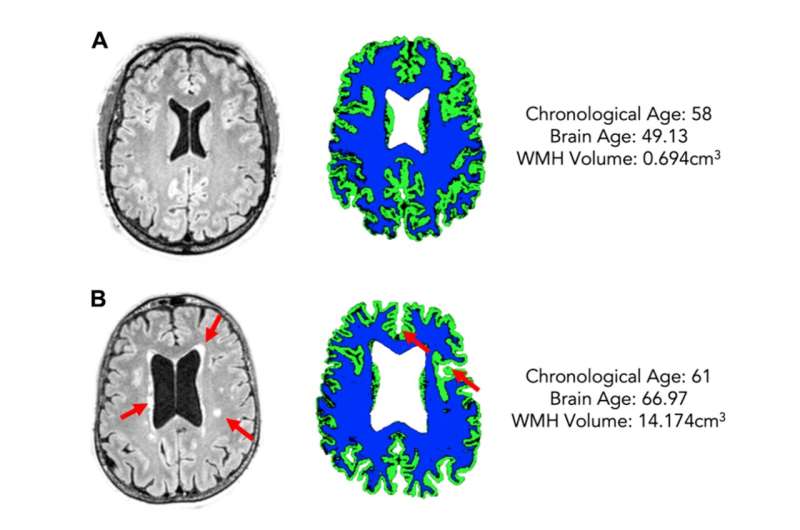White matter hyperintensity load is associated with premature brain aging

A new research paper titled "White matter hyperintensity load is associated with premature brain aging" has been published in Aging.
Brain age is an MRI-derived estimate of brain tissue loss that has a similar pattern to aging-related atrophy. White matter hyperintensities (WMHs) are neuroimaging markers of small vessel disease and may represent subtle signs of brain compromise.
In this new study, researchers from University of South Carolina, Medical University of South Carolina and Emory University tested the hypothesis that WMHs are independently associated with premature brain age in an original aging cohort.
"We hypothesized that a higher WMH load is linearly associated with premature brain aging controlling for chronological age," they explain.
Brain age was calculated using machine-learning on whole-brain tissue estimates from T1-weighted images using the BrainAgeR analysis pipeline in 166 healthy adult participants. WMHs were manually delineated on FLAIR images. WMH load was defined as the cumulative volume of WMHs. A positive difference between estimated brain age and chronological age (BrainGAP) was used as a measure of premature brain aging. Then, partial Pearson correlations between BrainGAP and volume of WMHs were calculated (accounting for chronological age).
Brain and chronological age were strongly correlated (r(163)=0.932, p<0.001). There was significant negative correlation between BrainGAP scores and chronological age (r(163)=-0.244, p<0.001) indicating that younger participants had higher BrainGAP (premature brain aging). Chronological age also showed a positive correlation with WMH load (r(163)=0.506, p<0.001) indicating older participants had increased WMH load. Controlling for chronological age, there was a statistically significant relationship between premature brain aging and WMHs load (r(163)=0.216, p=0.003). Each additional year in brain age beyond chronological age corresponded to an additional 1.1mm3 in WMH load.
"WMHs are an independent factor associated with premature brain aging. This finding underscores the impact of white matter disease on global brain integrity and progressive age-like brain atrophy," the researchers conclude.
More information: Natalie Busby et al, White matter hyperintensity load is associated with premature brain aging, Aging (2022). DOI: 10.18632/aging.204397



















